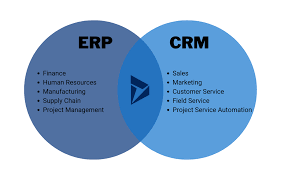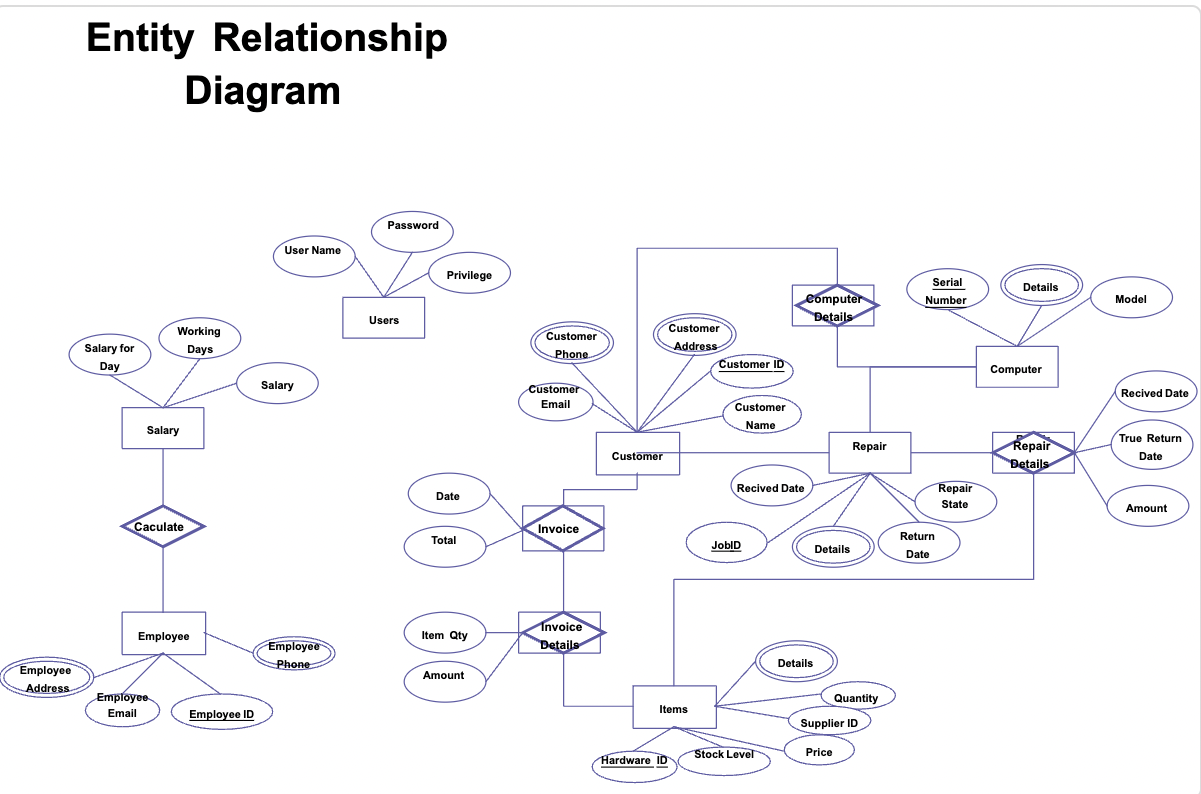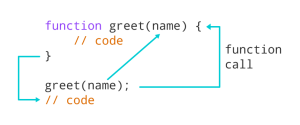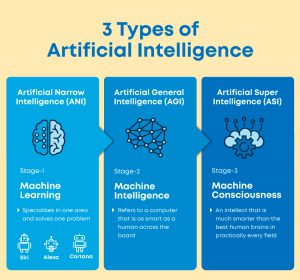Big data differs from regular data because big data uses distributed architecture. Which just means that data is gathered from several different computers within a network. Big data is important to businesses because it improves operations, customer service, and marketing, allowing them to make faster and more informed business decisions. Businesses can analyze real-time and historical data to assess the changes in preferences and enable the business to be more responsive to changes. Big data, it is characterized by something called “6Vs.” The 6 V’s include: volume, velocity, variety, veracity, value, and variability. Volume helps define big data because the volume is a large amount of data making it big data. Velocity refers to the high speed of the collection of data. When there is a large and continuous flow of data that helps us define the data as “big data.” The variety of big data can be broken down into 3 categories: structured data, semi-structured data, and unstructured data. Structured data is organized data, and semi-structured data does not have a formal structure. Unstructured data is data that does fit into any typical structure. Veracity is the uncertainty with data. With big data, there is data coming in different types of data coming from multiple sources. Value is what gives data its purpose. Data is useless unless you have a goal in collecting it. Variability is the changing shape of the data you collect. The “6 V’s” of data allows us to understand data and also apply these concepts to define if the data we collect is big data.
there is data coming in different types of data coming from multiple sources. Value is what gives data its purpose. Data is useless unless you have a goal in collecting it. Variability is the changing shape of the data you collect. The “6 V’s” of data allows us to understand data and also apply these concepts to define if the data we collect is big data.
Posts
ERP and CRM: What they stand for and what they do
ERP stands for “Enterprise Resource Planning.” ERP is a software or system that integrates functions, streamlines processes, and manages a business. An ERP stores all sales, warehouse, and accounting data in one system. ERP’s can solve communication challenges, can take over the roles of certain positions to manage workers’ time better, as well as track customer data and aid in decision making. CRM stands for “Customer Relationship Management.” CRMs can be utilized in marketing, sales, HR, accounting, and orders. CRMs allow for a more standardized way of dealing with tasks allowing for more clarity and productivity. CRM and ERP are both software that get work done more efficiently and effectively, but the key difference between CRM and ERP is that CRM is used more in the sales and customer service side of the business while ERP software is used more in finance and specific business processes. The benefits of utilizing the two software together can be shown by Amazon. 
Javascript
This week was a difficult one because we were learning JavaScript and I knew nothing about it. This is more of my sister’s thing. She is a Graphic Designer. Anyway, variables are identifiers. Identifiers of data being entered. We create a variable by using the keyword let and after typing the name we came up with for the variable. This is how we declare a variable let yourname. This is how we initialize a variable let yourname= “Isel Sainte”; When naming a variable, the length does not matter, it can start with a letter/underscore/dollar sign, you can mix and match lowercase and uppercase letters, a number is not allowed, spaces are also not allowed.
Here is what arithmetic operators in JavaScript, and what they all do:
+ it adds
– it subtracts
* it multiples
/ it divides but this result is a floating-point number
% it divides but this result gives the remainder
Order of operation is important when using the arithmetic operators.
Entity Relationship Diagram (2a)
An Entity Relationship Diagram (ERD) is a visual description of various types of data and shows how different types of data relate to one another. An ERD includes 3 primary symbols that are a rectangle, an oval, and a diamond. The rectangle is called an ‘entity’ which is considered a noun. An oval is an attribute which is an adjective or characteristic of something, and a diamond is a relationship which is also a verb, how are they related? The ERD diagrams can help businesses analyze different types o relationships that are existing within their business process. For example, a company who creates computer may make an ERD to explain various relationships within the company about how they get/make their product, how one is purchased, and more. Below is an example of an ERD that I found that relates to my example as well:

Entity Relationship Diagrams are a great way for businesses to understand the information and data that is being stored and used within their own company.
Functions in JavaScript
 Functions in JavaScript
Functions in JavaScript
In JavaScript, functions are essentially pieces of reusable code that are designed to perform a task when called, or executed. Functions have inputs and outputs, much like those that you typically think of in a mathematical context. Functions have parameters that they take – in the above photo, name is a parameter of the function greet. Functions also have code that the execute. The above photo only has // code commented, not giving us an example of what code this function might execute, but we can make up the example that this function might execute {console.log(“hello, ” + name);}. Then, when you call the function, or tell the computer to run the action, our code would execute. Of course, our variable name would have to be previously defined – for the ease of the example, we can say we defined let name = “John”. Without knowing how the greet function actually executes, we can say in this example that when we call greet(“John”) that our function would return hello, John. Functions can become much more complicated depending on the parameters, the functions that you’re actually using, and the statements or code inside the function that the function will execute, but the basic idea behind a function is still inputs and outputs!
Three Types of AI
 The Three Types of AI
The Three Types of AI
We can sort artificial intelligence into narrow, general, and super intelligence. Artificial narrow intelligence is designed to be useful for one certain task, skill, or problem. ANI can come close to human capabilities, and potentially surpass them, but ANI only works under limited parameters. ANI is the only artificial intelligence that exists today. One example of artificial narrow intelligence is Jasper, an AI copywriter which can create content instantly, disrupting many creative fields such as blogging and advertising. Artificial general intelligence is AI with human capacities for cognitive functioning and reasoning, but across many areas. AGI is still theoretical, but would be, for example, a version of Jasper that could not only create copy, but deconstruct the meaning behind this copy. It is difficult to wrap your mind around the differences between AGI and ANI, as the difference lies in the specific cognitive functions that define humans like reasoning and processing, but AGI is basically a more human and adaptable version of ANI. Artificial super intelligence is artificial intelligence that completely surpasses human capabilities. Again, it is difficult to conceptualize what this might actually look like, because we are so far away from this goal, but additional capabilities of ASI past AGI would be the ability to make rational decisions and form emotional relationships. Using the Jasper example, perhaps this might look like a version that could create copy, understand the emotional meaning behind the copy, and then make a decision between two different versions based on which is more emotionally resonant for a specific ad campaign.
Weekly Disscussion 4b
Threat modeling is a way to stay secure online. Questions to ask is:
What do you want to protect?
Who do you want to protect it from?
How likely is it that you will need to protect it?
How bad are the consequences if you fail?
How much trouble are you willing to go through in order to try to prevent those consequences?
A way to protect yourself online is to set up two-factor authentication (2FA). It will require you to take two steps to log in. One step would be your password and the other step would be a text or email with a code to allow you to enter. There are also other ways to protect yourself like antivirus, ad blockers, back-up files, VPN etc.. I actually use VPN on my work laptop because I work from home and am connected to my home internet. The business does this to protect the files on the computer. We have a lot of data on them.
Weekly Discussion 4a
Digital Platforms make it easier to find customers. I think of how businesses are on social media for example Fashion Nova. The business is able to post products and customers would follow to see the content until they see items that they are interested in and make a purchase. The Network Effect is when a product gains more value because of more people using it. Examples are Instagram and LinkedIn. One of the biggest cons of Cloud Computing is Security. When your information is stored, there is the risk of it being hacked and used. Another con is availability. The pros of Cloud Computing are cost and ease of use. Oh, and collaboration between customer and business. Application Programming Interface (APIs) it is a way for computer programs to communicate with each other. A good example was the one Professor Sclarow mentioned when we use uber eats it communicates with google maps to help find our location and what restaurants are close to us. APIs build value because it makes it easier to access multiple ecosystems.
Blog Post Week 4A
Software as a Service (SaaS) – cloud-based services, pay-as-you-go for services such as storage, networking, and virtualization.
Platform as a Service (PaaS) – hardware and software tools available over the internet.
Infrastructure as a Service (laaS) – software that’s available via a third party over the internet.
Cloud computing consists of hardware and software resources made available on the internet as managed external services. Large clouds often have functions distributed over multiple locations, each location being a data center. The resources are dynamically scalable and often virtualized. It is a model for enabling ubiquitous, convenient, on-demand network access to a shared pool of configurable computing resources that can be rapidly provisioned and released with minimal management effort.
Some examples include Google Drive, Apple iCloud, Dropbox, and Microsoft OneDrive.
The benefit of the cloud is knowing your information is backed up, protected, and secured in a safe location. Having your documents on the cloud means you can access your information from anywhere making it very much convenient.
A product manager focuses on product development and release. The product manager links company strategy, design expertise, and the customer wants. PMs are concerned with improving a product to meet user needs and company objectives while maximizing return on investment. It includes managing every aspect of the product lifecycle, from the start stage to when the product is in the market.
Who is Alan Turing, and what is the Turing test used for?
Alan Turing was a mathematician, computer scientist among other things and was born in 1912. He died in June of 1954, but is considered the founding father of artificial intelligence and modern cognitive science. Turner believed computers could gain artificial intelligence by mimicking human behavior and as a result of this belief he created what is know as the Turing test. The Turing test is a series of questions that you ask a machine or computer to see if it can act like a human being. This also entails a persons asking the machine questions to determine if it is human or in fact a computer, so now you can go on some websites and take the test to see if you can figure out if you were assigned a person to chat with or an artificial intelligence machine. The Turing test will continue to be essential in our society for helping us determine how smart and how far artificial intelligence has come because now there is more AI than ever before and it is becoming better than it ever has. Systems like GPT-3 are making great progress but they still have ways to go.